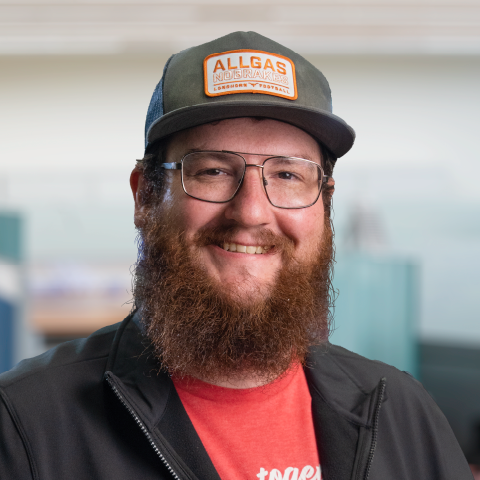Related Topics
Conductive Cuisine
We'll explore an in-depth study conducted by Seth Jenkins, Neil LaTourette, and Brendan Liverman on how boiling time affects hot dog conductivity.
Wanting to be a Wizard - Matt Brown
Matt Brown, shares his career insights, including his experiences working at Tesla and on personal projects like the land speed car and the off-road Viper.
Exploring the Arctic Through Art and Technology with Cy Keener
Cy Keener's work includes a range of data-based efforts to visualize diverse phenomena including ice, wind, rain, and ocean waves.
Other Resources
Circuit Break Podcast
Webinars
Videos
Tour MacroFab's ITAR-Compliant Facility
January 13, 2021, Episode #259
Parker
- Your C@$% Is Mine Now
- We actually brought up the security report on this device back in Oct 2020 on episode MEP 245: K-factoring A Gumbo
- Qiui, the China-based manufacturer of the device, which is aptly called Cellmate, did not respond to a request for comment
Stephen
- Solar Freaking Roadways!
- First talked about on MEP EP1…
- “France building a huge solar roadway. This again?”
- Solar Roadway
- Timeline
- 2006 solar roadways is founded
- 2009 – 100k small business innovation grant from USDOT
- 2011 – 750k small business innovation grant from USDOT to make small “parking lot”
- This is what shows up in all the videos.
- 2014 Indigogo campaign raises 2.2mil – the highest at the time
- 2016 given an additional 750k by USDOT
- 2016 Jeff Jones Town Square
- 30 panels
- Supposed 60k install cost
- Wiki – .25kW per day
- Typical Home install 1.45kW/day
- According to thunderF00T ⅓rd of the energy is consumed by the LEDs and the remainder is in heat.
- 2016 France installs Wattway
- 5.2 million to build expected 767 kwh per day.
- $20/ kwh 13x the cost of rooftop installation. Only produced 409kwh/day
- 2020 December USA gets its first real solar road! Woohoo!
- City of Peachtree Corners in Gwinnett County, Georgia
- About the size of a typical Rooftop install but less than half as efficient
- 4 Solar roadways we can find in the world… only 1 has been declared a success.
- Dutch bike path
- 70-metre test bike path generating 3,000 kWh
- Looks to be a meter wide. 70 sq meters or ~760 sq ft
- Average house only needs ~300 sq ft of solar panels on a roof….
- First talked about on MEP EP1…
About the Hosts

Parker Dillmann
Parker is an Electrical Engineer with backgrounds in Embedded System Design and Digital Signal Processing. He got his start in 2005 by hacking Nintendo consoles into portable gaming units. The following year he designed and produced an Atari 2600 video mod to allow the Atari to display a crisp, RF fuzz free picture on newer TVs. Over a thousand Atari video mods where produced by Parker from 2006 to 2011 and the mod is still made by other enthusiasts in the Atari community.
In 2006, Parker enrolled at The University of Texas at Austin as a Petroleum Engineer. After realizing electronics was his passion he switched majors in 2007 to Electrical and Computer Engineering. Following his previous background in making the Atari 2600 video mod, Parker decided to take more board layout classes and circuit design classes. Other areas of study include robotics, microcontroller theory and design, FPGA development with VHDL and Verilog, and image and signal processing with DSPs. In 2010, Parker won a Ti sponsored Launchpad programming and design contest that was held by the IEEE CS chapter at the University. Parker graduated with a BS in Electrical and Computer Engineering in the Spring of 2012.
In the Summer of 2012, Parker was hired on as an Electrical Engineer at Dynamic Perception to design and prototype new electronic products. Here, Parker learned about full product development cycles and honed his board layout skills. Seeing the difficulties in managing operations and FCC/CE compliance testing, Parker thought there had to be a better way for small electronic companies to get their product out in customer's hands.
Parker also runs the blog, longhornengineer.com, where he posts his personal projects, technical guides, and appnotes about board layout design and components.

Stephen Kraig
Stephen Kraig is a component engineer working in the aerospace industry. He has applied his electrical engineering knowledge in a variety of contexts previously, including oil and gas, contract manufacturing, audio electronic repair, and synthesizer design. A graduate of Texas A&M, Stephen has lived his adult life in the Houston, TX, and Denver, CO, areas.
Stephen has never said no to a project. From building guitar amps (starting when he was 17) to designing and building his own CNC table to fine-tuning the mineral composition of the water he uses to brew beer, he thrives on testing, experimentation, and problem-solving. Tune into the podcast to learn more about the wacky stuff Stephen gets up to.
Special thanks to whixr over at Tymkrs for the intro and outro!